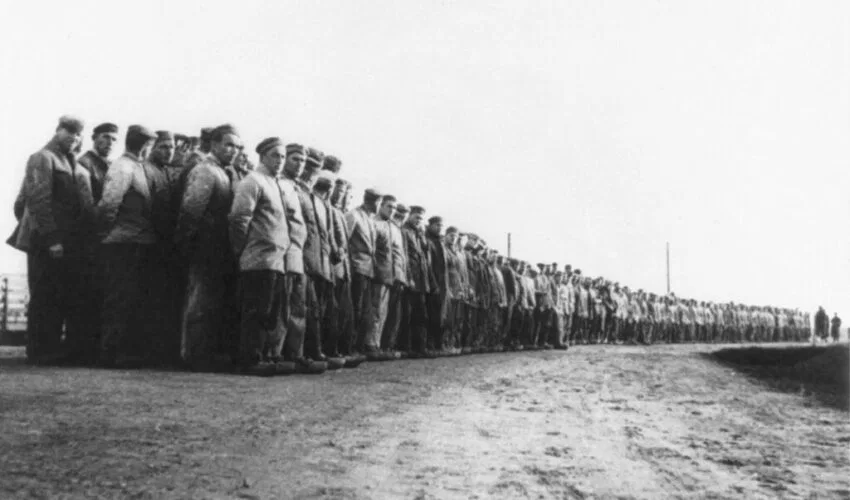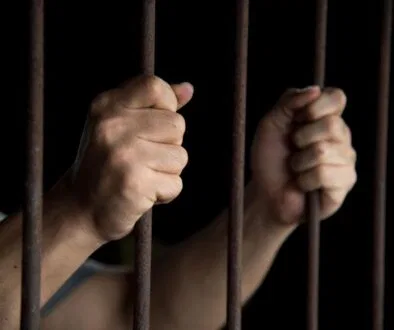Working Behind Bars: The Truth About Prison Labor in the U.S.

Published September 20, 2023
It comes as no surprise that life behind bars is one of the most devastating scenes. No one wishes anyone to live their lives in prison. Behind many problems, such as overcrowding, gang activity, and inadequate health care, detainees also deal with prison labor.
Prisoners work, but unlike a regular job, they have little choice about it. They also get paid a pittance, and sometimes none at all. They can’t quit and complain. The workplace safety regulation also ranges from questionable to non-existent.
In this article, we will unravel the truth about prison labor in the U.S. We must be aware of many social issues today. Even though it doesn’t impact us directly, the knowledge we possess can help spark changes. It can lift those struggling. Let’s begin.
History of Prison Labor
The history of prison labor in the United States dates back to the early years of American history. Below are the defining eras that made it possible and prevalent.
1. Roots in Slavery
The use of prisoner labor has roots that can be traced back to the country’s system of slavery in the U.S. It is a way to continue exploiting individuals. It is even after the abolition of slavery. Many early forms of prison labor were similar to the exploitative approaches during subjection.
2. Post-Revolutionary War and Pre-Civil War Era
Prison labor has existed since the beginning of American history. It has a record dating back to the post-revolutionary war and pre-civil war eras. During this time, various forms of convict labor were exercised. It involved hard physical work in the agriculture, mining, and construction industries.
3. Convict Leasing
As we transitioned to the late 19th century, several states began leasing out convicts to private companies for labor. The states were Alabama, Texas, Louisiana, Arkansas and Georgia. Mississippi and Florida were reported to join, too. This practice was highly exploitative. Many prisoners were subjected to harsh working conditions. The labor they rendered was leveraged to generate profits for these companies.
4. Ratification of Laws
The earliest known law permitting prisoners to be paid for their labor was an act passed by New Yorker Governor Jon Jay. It was in 1796. Over time, more explicit laws were enacted. It further allows the use of prison labor as a means of punishment and revenue generation.
5. Modern Prison Labor Industry
In this modern day, prison labor continues to be a significant part of the U.S. economy. It has evolved into a multi-billion dollar industry. Most U.S. convicts are now involved in various types of work. They contribute on manufacturing, call centers, agriculture, and services.
Prison Labor in the U.S.
Nearly two-thirds, or 65% of jailed people, report working behind bars. It amounts to roughly 800,00 workers. More than three-quarters of them say they are facing punishment. Some are solitary confinement, denial of sentence reductions, or loss of family visitation. It is the case if they decline to work.
Prison laborers have no control over their work assignments. They are also shut from minimum wage and overtime protections. They are unable to unionize. They do not have access to adequate training and equipment. The most heartbreaking of them all is that they are denied workplace safety guarantees. It is despite persistent dangerous working conditions.
As a result, 64% of these detainees surveyed report worrying about their safety and well-being while working. 70% say they received no formal job training. Another 70% report being unable to afford basic prison necessities. It is such as soap and phone calls, with their prison labor salaries.
Clearly, the labor conditions of the penal laborers in many U.S. prisons violate the most fundamental human rights to life and dignity. Clinical Professor Claudia Flores first said it.
How Much Do Prisoners Make: Do Prisoners Get Paid?
In prison labor programs in the United States, incarcerated workers earn meager wages. It is often just a few cents per hour. The exact amount varies from state to state. It will also impact the type of work performed within the prison system.
The Prison Policy Initiative reported that the average minimum daily wage for nonindustry prison jobs is 86 cents. On the other hand, NPR has an average salary of 52 cents per hour. The Vera Institute of Justice states that the current wage scale for prison laborers ranges from $0.10 to $0.65 an hour. Finally, the American Civil Liberties Union says they typically earn little to no pay. Most prisoners only make just pennies an hour.
What Types of Jobs Prisoners Do?
1. Institutional Work Assignments
Inmates may work in food service, warehouse management, inmate orderly duties, plumbing, painting, and groundskeeping. These jobs help sustain the functioning and upkeep of the correctional facility.
2. Manufacturing
Certain prisons have manufacturing facilities where detainees are employed in various industries. They typically produce goods such as garments, furniture, printed materials, and electronics.
3. Vocational Training Programs
Some prisons offer vocational training to inmates. They give opportunities to learn skills in trade. These skills are carpentry, welding, automotive repair, and computer programming. Some prisoners can also be experts in culinary arts. These programs support equipping prisoners with marketable skills for their eventual society reintegration.
4. Joint Ventures and Partnerships
Private sector companies sometimes collaborate with correctional facilities. They do so to render employment opportunities for inmates. These include manufacturing, call center services, distribution and farm work,
5. State Owned Businesses
State-owned businesses can employ incarcerated workers. They are subject to producing goods and services sold to other state entities. It contributes to the overall productivity of the prison labor system.
How the U.S. Prison Labor Contributes to the Country’s Economy
Incarcerated workers in the United States generate billions of dollars annually. It is due to the goods and services they render. According to reports, these contributions can exceed $11 billion each year.
Prison laborers are employed within correctional facilities. It gives avenues for detainees to develop skills, gain work experience, and potentially find employment upon release. The prison labor industry also causes industries and government entities to save labor costs. Instead of hiring outside workers, they hire convicts, resulting in cost savings.
However, it is essential to remember that prison labor is beyond tolerable. It is unjust as they support exploitative practices. It reinforce low wages. It takes part in potential human rights violations.
Is Prison Labor Legal?
Even though the 13th Amendment prohibited slavery in 1865, it was not entirely abolished. This Amendment also provides that the government can use it as punishment for crimes, provided that there’s a conviction. Thus, prison labor is (unfortunately) very much legal, according to our Constitution.
However, in November 2018, Colorado‘s voting public decided to do away with slavery completely. 65% of the voters favored abolishing slavery, including forced labor of convicted criminals. But Colorado is not the only state with a constitution that allows slavery as a form of criminal punishment. Nevada, South Carolina, Tennessee, and Wisconsin (to name a few) also allow such practice under their constitutions.
The Horrors of Prison Labor
1. Exploitation
Critics argue that prison labor can be exploitative. Incarcerated individuals often receive lower wages than their free-market counterparts. It perpetuates a cycle of economic inequality. It also contributes to the devaluation of labor.
2. Lack of labor protections
Prisoners don’t have access to the same labor protections and rights granted to the workers outside of prisons. There are vast reports of prisoners facing unsafe working conditions. They also deal with inadequate training. In the event of mistreatment and injury, they only have limited legal recourse.
3. Limited opportunities for rehabilitation
Focusing on prison labor as a means of generating revenue may divert resources away from education, vocational training, and other forms of rehabilitation. It is saddening. Rehabilitation can better prepare prison laborers for successful society reintegration.
4. Undercutting free market competition
Using prison labor can spark unfair competition with companies outside of prisons. The low wages paid to prison laborers can lead to an imbalance in the market. It is because manufacturers may struggle to compete with the prices offered by prison labor.
5. Perpetuating systematic inequality
The overrepresentation of specific communities, particularly people of color, within the prison system raises concerns about the equitable distribution of opportunities. Also, the potential for further marginalization.
Companies That Use Prison Labor
1. Walmart
Walmart is the top corporation that employs prison inmates for its production supplies. The company has practiced it for a long time already. They use inmates to perform manufacturing tasks. They also make them clean products of UPC barcodes and erase the barcodes of returned items. It is done so that they can be repaired and resold. Other works include repackaging of returned goods.
According to Walmart, they only leverage voluntary prison labor. Their program pays inmates prevailing salaries to prepare them to return to society. They provide marketable skills and job training to assist them in their job search.
2. McDonald’s
McDonald’s has taken advantage of prison labor for its frozen goods. Prisoners process beef for burgers, potatoes for fries, and package various chicken products. They also process bread and milk products.
The fast food chain has been rebuked for its exploitative practices against detainees. Yet, they stated in 2020 that they do not support any form of forced or involuntary prison labor.
3. Compaq
More than 20 years ago, it was discovered that Compaq used prison labor to manufacture circuit boards. Twenty years later, there has been no sign that the company has slowed down its usage of prisoners to generate these computer components.
4. Wendy’s
Wendy’s is also a prominent fast-food titan that has leveraged penal labor for many years. The inmates process beef to prepare burgers. The company uses this labor source to ensure a low cost of operations.
5. Starbucks
Starbucks uses prison labor to cut down its manufacturing expenses. The company subcontracts various coffee packaging jobs to Washington State Prison services. Prison labor is mainly employed to manage their holiday coffees during the holiday season.
6. Sprint
Sprint has used blue and white-collar detainees to render telecommunication services to its customers. Inmates are provided with call center jobs 24/7. They provide customer service and assistance to the company’s clients. The company is entirely against forced and involuntary prison labor.
7. Verizon
Verizon is another major telecommunications firm that leverages white-collar criminals to supply telecommunication to its customers.
8. Nintendo
A 2020 U.S. State Department-funded Australian Strategic Policy Institution report found that at least 83 companies were directly or indirectly associated with Chinese forced labor comps. Nintendo was one of the companies presented on the list. Sony and Microsoft are also included in the report.

ADVERTISEMENT
Frequently Asked Questions About Prison Labor
1. What is the purpose of penal labor?
One purpose of penal labor is to provide opportunities for incarcerated individuals to develop skills. It encourages them to gain work experience and potentially rehabilitate themselves. Penal labor can also help reduce the cost of running correctional facilities. By using it, prisons can produce goods and services for their use. Thereby lessening expenses.
2. What happens if a U.S. prisoner refuses to work?
In many cases, refusing to work in prison can result in disciplinary actions. It includes receiving a disciplinary report. A disciplinary report can impact inmates’ privileges and overall standing in the facility. The benefits may include access to recreational activities, visitation rights, and participation in education programs.
3. Is there a prison labor industry in the U.S.?
Yes, there exists a prison labor industry in the United States. Incarcerated workers are involved in many forms of labor. It includes manufacturing goods and rendering services. Prison laborers produce billions of dollars annually for their work for public and private entities.
4. How many prisoners in the U.S. are forced to work?
Nearly two-thirds, or 65%, of incarcerated individuals in the United States report working behind bars. It amounts to roughly 800,000 workers in prisons.
If we’re to fight for equality, prison labor is something we should reflect on. It has a lot of faults, horrors, and injustice. Let us grace compassion and know that detainees have a life, too. While not disregarding their crimes, they should have access to adequate human rights. Let’s not be our monsters and know what is right and wrong. If you find this helpful, consider sharing our words. Let’s spark a healthy conversation around this matter.
Reduce Your Jail Call Costs By Up To 90% Per Minute With GlobalTel
GlobalTel’s inmate calling service lowers jail call per minute rates by up to 90% for jail calls from US facilities. Sign up now and use the special jail call phone number we create for you to eliminate the long distance jail call fees. Try GlobalTel for only $45.99 for 90 days. Make US/domestic and international jail calls at the local rate and stay connected to your incarcerated loved ones for less. Learn more about how to sign up for calls from inmates here.

This Content Is Fact Checked
Our esteemed team of specialists has thoroughly validated the accuracy of this information. Discover further details about the rigorous editorial guidelines for our website here.
ADVERTISEMENT

About The Author
I am Tracy Gorman, a seasoned writer with a passion for crafting content on various subjects. I possess the expertise to delve into any niche and deliver exceptional articles.




